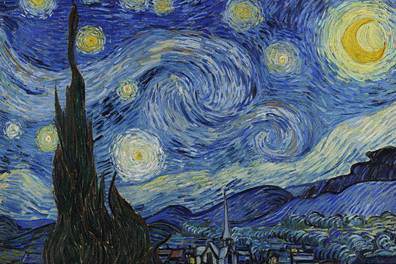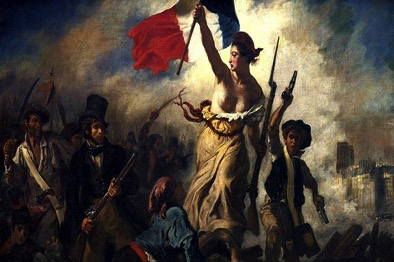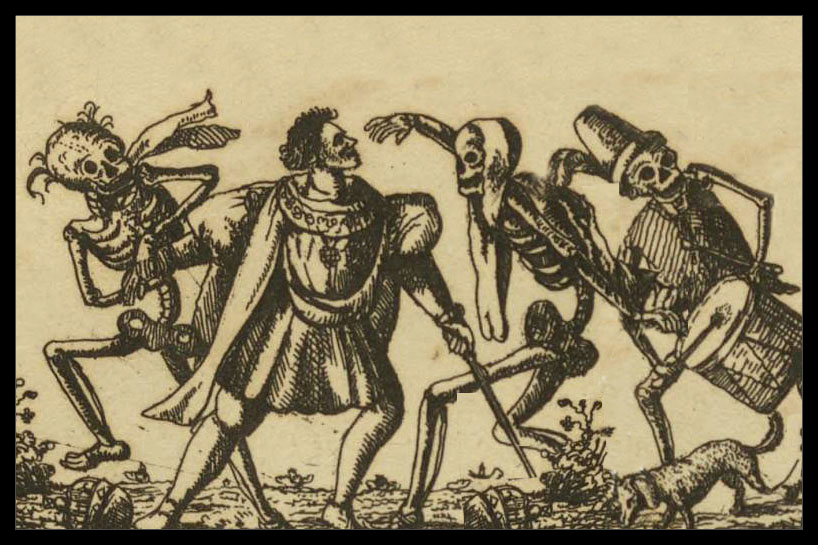The Answer Is….
I have taught various humanities classes over the years, ranging from history, philosophy, theology, ethics, etc. However, the one single course that I love the most was art history. Interestingly, I was in my junior year at Muskingum College six decades ago. All students were required to take a class called The Arts, which was a 10-hour class in their junior or senior year. Many of my classmates waited until they were seniors out of fear and trembling. I could have waited until then but didn’t. Taking The Arts from Louie Palmer was transformative for me. It changed my Weltanschauung.

This photo and the next one are from my yearbook at Muskingum.
While I didn’t ace the class, Louie saw something in me and offered me the job as his teaching assistant in my senior year. I sat in on all the lectures again, taught several subsections weekly, and wrote and graded the midterms and finals for both semesters.

In the past couple of decades of teaching, my favorite class is art history. Therefore, this essay reflects my Weltanschauung about art. My favorite paintings are Turner’s The Fighting Temeraire, van Gogh’s Starry Night, Chagall’s I and the Village, and Ghirlandaio’s An Old Man and His Grandson. At the end of this essay, there is additional information about these artists and their masterpieces.
However, no artist, whether a painter, sculptor, writer, musician, etc., just sits down and creates art. All artistic expression derives from some type of pain that the artist is facing. It could be physical or emotional issues. Other painters addressed political issues or social movements. This reflects the old adage: no pain, no gain.
However, what about the viewer? While most people who view any painting aren’t aware of the artist’s motivation, the viewer likes or dislikes a painting for various reasons also related to pain.
This is an interesting example. Less than two years before the American Civil War, Frederic Edwin Church painted Heart of the Andes, a large 5 x 10-foot painting.

Church came from a Puritan background in New England and painted during the Romantic Age. Romanticism dealt with nature and addressed personal feelings, imagination, and emotions. It also tended to look to the past rather than the future. Romanticism reacted against the Industrial Revolution and the Age of Enlightenment. Enlightenment, which was a time that people would question everything. It looked to science and reasoning for an explanation of the world in which they lived.
This is your assignment. I would like you to pick out several of your favorite paintings. Then jot down a couple sentences about what resonates within you as you look at each of your paintings.
Next, google each of the artists and discover what the pain was that motivated them. The various pains will vary, but what doesn’t change is that something pushed them to create. They weren’t creating great art ex nihilo.
Finally, try to pinpoint the pain within you that each of those paintings seemed to address. My favorite painting of all time is Turner’s The Fighting Temeraire. Why? Why is that my favorite? It isn’t yours. The reason is that Turner was addressing his angst about the good old days of the past…a time of elegant sailing ships being replaced by polluting tugboats.
Over the years, I wish that I could return to Merchantville, NJ, where I began my life. Things seemed tranquil. Summers were spent on the dairy farm of my cousins. Today, we are polluting the Earth and not doing much to address climate change.
Van Gogh painted Starry Night while he was in the hospital for a litany of health issues. Despite all the swirling medical and emotional problems, he painted…from his hospital room. He is an example of a person with more problems than most people, yet…he carried on.
My dances with death, along with Ginger’s recent dance, have made me far more in tune with living in the moment. Doing the dance caused me to wake up to the reality that I am mortal, and my clock is ticking.
Chagall’s, I and My Village, seems to reflect his mind wandering about various remembrances of his childhood. I think that Chagall had ADD just like I do. Neither of our minds is at rest; they are always active.
Lastly, when I was in college, Ghirlandaio’s An Old Man and His Grandson fascinated me because of the love that two had for each other…some gnarled old man and a young child.
Today, that painting resonates with me in my twilight years. I have danced with death twice. I know my clock is ticking. That motivates me! Sometime in the not-too-distant future, I won’t be around to express my love for my family in the States or my family in Myanmar. While my two families appear, at one level, to be different, they aren’t. They both worry about social unrest and COVID. I can’t do much for either family now, let alone after I am gone.
Therefore, your assignment is to select a couple of your favorite paintings, analyze why the arts painted them and why you like them. That will address what’s it all about in 2021.

Turner’s The Fighting Temeraire



Ghirlandaio’s An Old Man and His Grandson
Follow @mountain_and_me



















